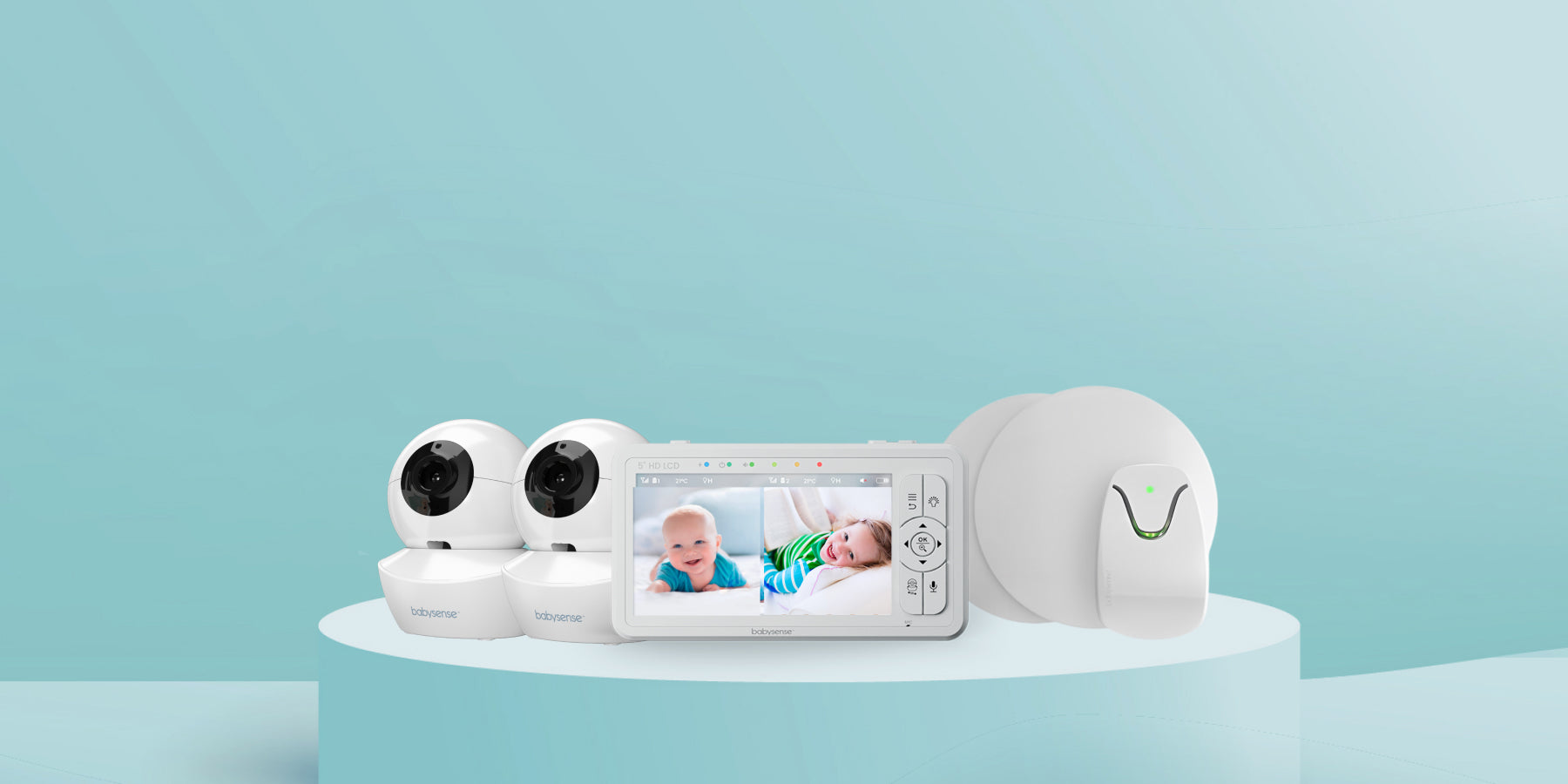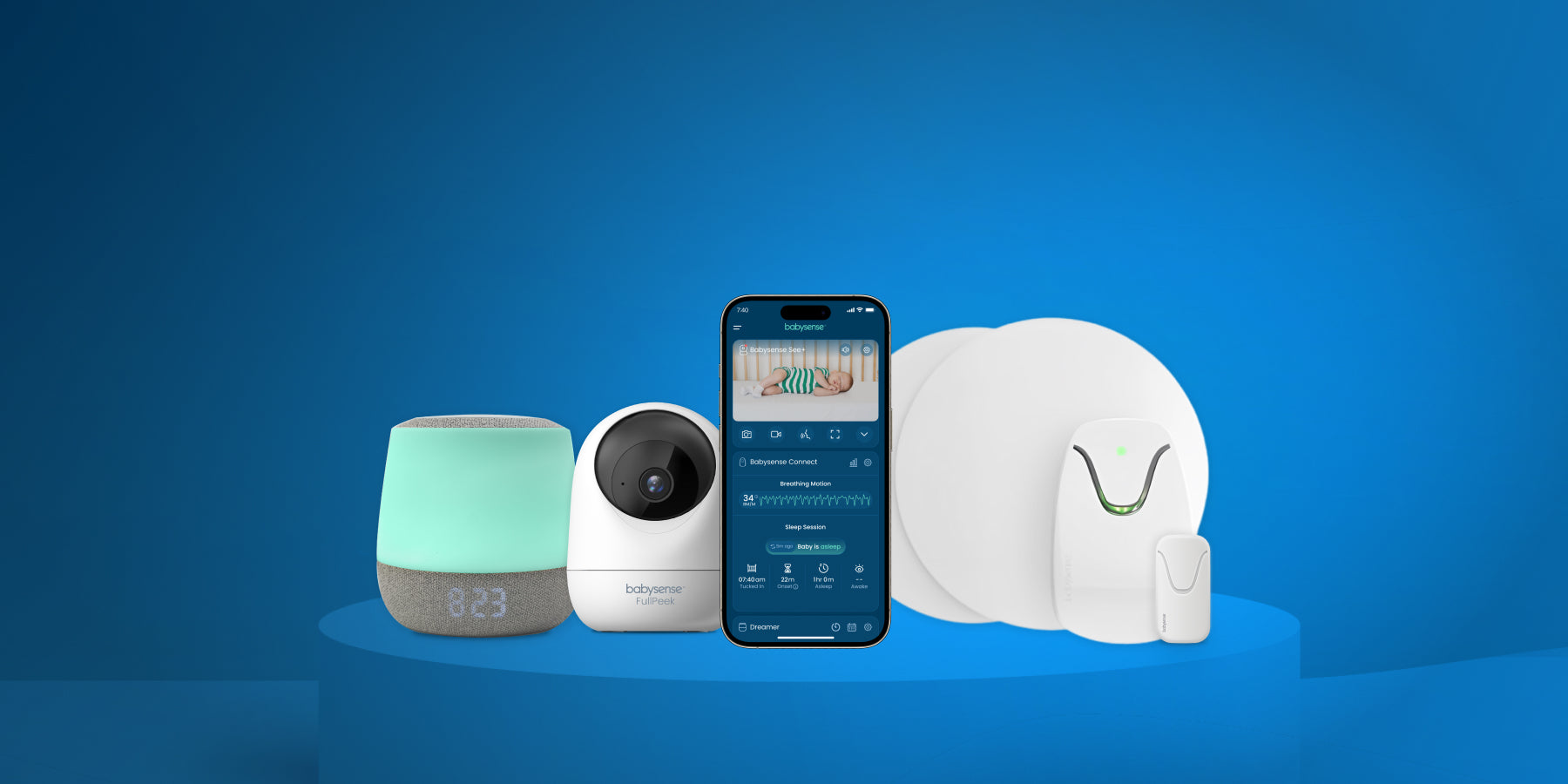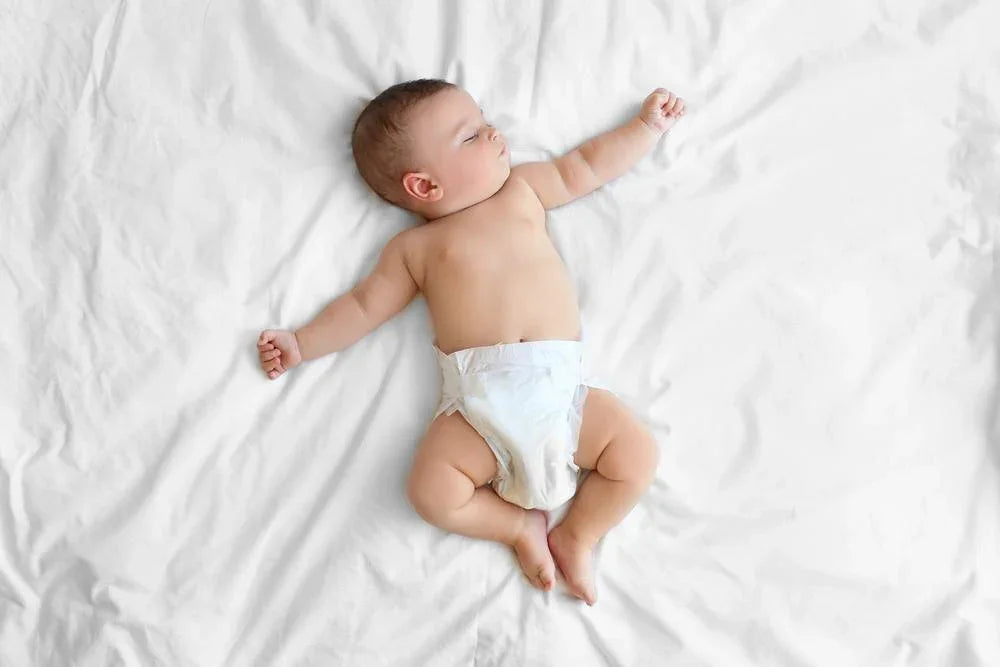No, babies should never sleep on their side. The American Academy of Pediatrics recommends placing all healthy infants under 12 months on their backs for every sleep period. Side sleeping significantly increases the risk of SIDS and suffocation.
Why Side Sleeping Is Dangerous for Babies
Side sleeping poses nearly the same SIDS risk as stomach sleeping, according to the American Academy of Pediatrics 2022 policy statement. The American Academy of Pediatrics recommends a safe sleep environment to reduce the risk of all sleep-related deaths. This includes supine positioning; use of a firm, noninclined sleep surface; room sharing without bed sharing; and avoidance of soft bedding and overheating. Here's why side sleeping is unsafe:
- Easy roll-over risk: Babies can quickly roll from side to stomach position
- Airway compression: Side positioning can partially collapse the upper airway
- Increased suffocation risk: Reduced ability to clear breathing passages
Safe Sleep Position: Back Only
When to Use Back Sleeping
- Every nap and nighttime sleep until baby's first birthday
- From birth regardless of feeding method or reflux concerns
- Even with flat head concerns (plagiocephaly can be managed with supervised tummy time)
SIDS Risk Reduction
Since the 1994 Back to Sleep campaign (now Safe to Sleep®), SIDS deaths have decreased significantly. In 2022, there were about 3,700 sudden unexpected infant deaths (SUID) in the United States. There were: 1,529 deaths from SIDS. 1,131 deaths from unknown causes. 1,040 deaths from accidental suffocation and strangulation in bed.
Complete Safe Sleep Checklist
Sleep Environment Requirements
- ✅ Firm, flat mattress with fitted sheet only
- ✅ Empty crib (no blankets, pillows, bumpers, or toys)
- ✅ Room temperature 68-72°F
- ✅ Room-sharing without bed-sharing for 6+ months
Sleep Positioning Tools
- ✅ Breathable swaddle (arms-free once rolling begins)
- ✅ Pacifier after breastfeeding is established
- ❌ Sleep positioners, wedges, or rolled towels
Learn more about creating a safe sleep environment from the AAP's comprehensive safe sleep guidelines.
When Can Babies Sleep on Their Side?
After 12 months old, when babies can consistently roll both ways independently. Until then, always place them on their back - if they roll during sleep after being placed on their back, that's generally safe.
Common Concerns Addressed
"My Baby Has Reflux"
Back sleeping does NOT increase choking risk, even with gastroesophageal reflux. Creating a safe sleep environment can help reduce your baby's risk of SIDS. On the other hand, we do know what causes accidental suffocation and strangulation in bed. This means parents can help prevent these accidents by following AAP guidance on safe sleep. Current medical evidence shows back sleepers actually clear secretions more effectively than side sleepers.
"My Baby Keeps Rolling to Their Side"
If your swaddled baby rolls to their side, immediately transition to an arms-free sleep sack so they can use their arms to reposition themselves safely.
"I'm Worried About Flat Head Syndrome"
Provide supervised tummy time when baby is awake and alert. Side sleeping is never a safe solution for preventing plagiocephaly.
Updated 2025 Safe Sleep Statistics
Recent data from the CDC's SUID surveillance shows concerning trends:
Beginning in 2020, the SUID rate has been increasing. In 2022, the SUID rate was 100.9 deaths per 100,000 live births. This makes following safe sleep guidelines more critical than ever.
Expert Resources and Authority Sources
This guidance follows current recommendations from:
- American Academy of Pediatrics Safe Sleep Resources - Updated 2024 guidelines and family education materials
- Centers for Disease Control SIDS Prevention - Latest statistical data and trends
- Safe to Sleep® Campaign - Evidence-based recommendations from NICHD
- HealthyChildren.org Safe Sleep Guide - Pediatrician-written family resources
State-Level Safe Sleep Programs
Many states have implemented targeted safe sleep initiatives. For example, Missouri's Safe Sleep Program provides localized resources and support for families.
Professional Development Resources
Healthcare providers can access continuing education through the National Action Partnership to Promote Safe Sleep, which offers training on evidence-based safe sleep counseling approaches.
Bottom Line
Always place babies on their backs to sleep on a firm, flat surface with nothing else in the sleep space. Side sleeping is not safe and is not advised. Preterm infants are at an increased risk of SIDS, so they must be placed in the supine position as soon as possible. Following these evidence-based Safe to Sleep guidelines protects your baby and helps everyone rest better.
Key Takeaway: Side sleeping doubles SIDS risk and is as dangerous as stomach sleeping. Back sleeping remains the only safe sleep position for infants under 12 months.





